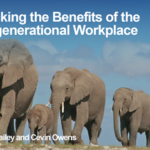As Women’s History Month winds down, I’ve been thinking a lot about women in the workforce. Not surprisingly, this thinking has been inextricably wound together with thoughts of the pandemic and the ongoing need to address issues of social justice. This year in particular, it’s hard to separate things out. But since this is the month in which we celebrate women, I’d like to take a look at things through the lens of women at work.
This has been a tough year for everyone, but when it comes to working, the negative impact on women has been significantly greater than it has been on men. Some of the data is truly startling. In Don’t Let the Pandemic Set Back Gender Equality, published in the Harvard Business Review last September, the authors shared analysis which found that, while women make up 39% of global employment, as of May 2020, they accounted for a staggering 54% of overall pandemic-related job loss.
For women still in the workforce, the pandemic is making things harder
While many women have lost their jobs entirely, life in a time of pandemic is making things more difficult for women who remain in the workforce. This was detailed in the most recent Women in the Workplace Report, an annual study of corporate America conducted by McKinsey & Company and LeanIn.Org. One of their most interesting findings was that senior-level women “are 1.5 times more likely than senior-level men to think about downshifting their careers or leaving the workforce because of Covid-19. Almost 3 in 4 cite burnout as a main reason.” This is thanks to the additional caregiving burdens that have fallen on mothers with children at home during the pandemic.
This finding should be a wake-up call to organizations that they need to, in the 1776 words of Abigail Adams to her husband John, “remember the ladies.”
Why does this matter? And what can we do about it?
It has been proven time and time again that organizations that leverage diversity at all levels perform better than those that do not. This is not, of course, confined to gender diversity. Racial diversity matters. A lot. As do age, geography, and socioeconomic and educational background. The more diverse, the better! But if the pandemic is driving women to draw back from the workforce, we need to take heed of this situation.
There’s no one simple fix to ensuring gender diversity, but there are a few steps organizations can make that will improve things for women in the workplace:
- Take advantage of technology: With millions of professionals working from home this past year, technology that enables meetings and collaboration has certainly been a major factor. Post-pandemic, technology can continue to support a more flexible work environment. But let’s make sure we’re taking advantage of technology, rather than having technology take advantage of us. Organizations should revise work policies and communications standards outlining expectations of when people need to be working. The fact that technology allows for “always-on” doesn’t mean that employees need to be available 24/7. Many organizations are starting to institute policies that establish timeout periods when employees are NOT expected to respond to calls, texts, and emails.
- Be flexible in terms of adapting to specific needs: Once corporate policies are revised, allow managers and employees to adapt them to their specific needs. For example, for one-on-one meetings, allow some latitude on meeting times that work best, which may not be during a typical 9-5 workday. And allowing for occasional non-video calls may take the pressure off mothers of young ones concerned that their children might make an unexpected guest appearance.
- Leverage diversity of thought: Organizations should be encouraging employees at all levels to innovate. Providing opportunities to do so can drive gender equity, both internally and externally. Instead of expecting the innovation hub or strategy team to come up with all the new ideas themselves, organizations should ask the people doing the work what would be most helpful for the company and for its customers. If you ask the women in your workforce for ideas on how your company can adapt existing products or services to drive gender equity, they’ll likely have plenty of good answers!
When it comes to women in the workforce, the pandemic is providing a good loud wake-up call. We don’t want to undo the progress that’s been made to date with respect to gender diversity.
What steps has your organization taken to help close the gender gap?
Ellen Bailey is senior advisor for diversity, inclusion, and belonging at Harvard Business Publishing Corporate Learning. Email her at ellen.bailey@harvardbusiness.org.
This post was originally published on OpenSesame.com.







